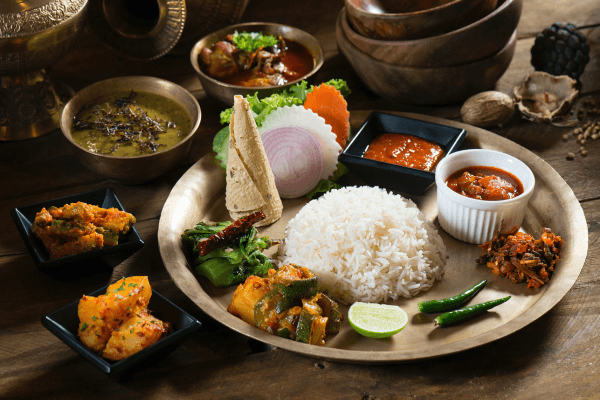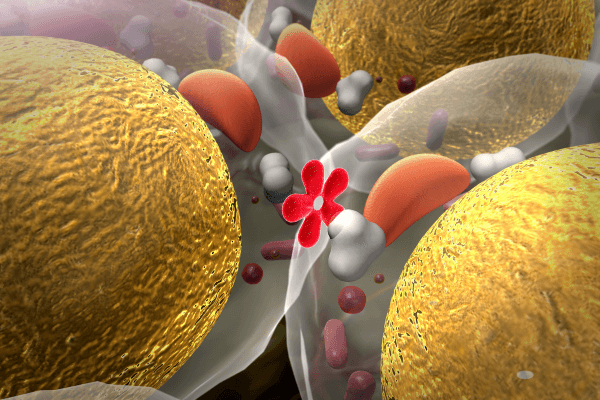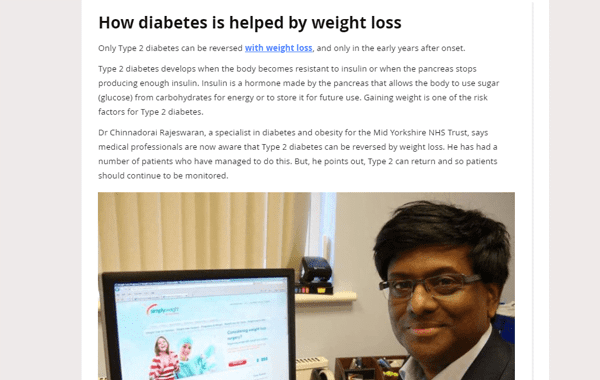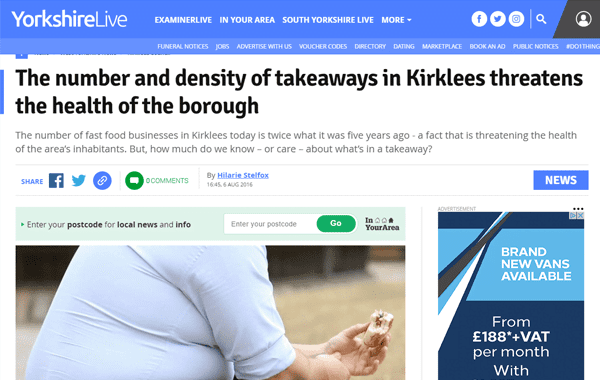Simply put, belly fat or pot belly is the fat around the abdomen. Everybody has some fat on their belly.
We all have two different types of body fat: subcutaneous fat and visceral fat. Subcutaneous fat is present under the skin which makes your clothes tight and fat that covers our organs is called visceral fat. When the fat around the organs builds up, it pushes the organs and is likely to increase the risk of developing type 2 diabetes, heart conditions, and cancer.
Belly fat is more common in men than in women who are in their pre-menopausal stage.
A recent study shows that lack of physical activity and excessive consumption of white rice leads to the deposition of abdominal fat among South Asian people.
Measurement of belly fat
1. Waist circumference
The measurement of fat around the waist is called waist circumference. It is a good indicator to measure fat deposition. You can measure your waist circumference at home using a tape measure. First, identify the end of the rib cage bone and the tip of your hip bone. Find the midpoint between the two, wrap the tape around your body, and measure to make sure it is not tight.
2. Body composition analysis (BCA)
Body composition analysis helps evaluate your body’s weight by breaking down the components into body fat, muscle mass, body water, bone mineral density and visceral fat. Measuring yourself using BCA helps you identify skinny fat and obesity.
3. Dual-energy X-ray absorptiometry (DEXA scan)
The DEXA method measures body weight by two different X-rays. DEXA helps differentiate between lean and fat. It also measures bone density, body fat and muscle mass for different parts.
The science behind the belly
Understanding the gut
The food is broken down into different parts such as carbohydrates, proteins, and fats in the small intestine. Salivary glands, stomach, and pancreas produce enzymes that break down food. Nutrients, vitamins and salts are absorbed in the small intestine.
In the large intestine, the nutrients and salts are absorbed; this helps solidify the stool. The gut microbes or gut flora help in the absorption and production of vitamins. These microbes digest the non-digestible food and produce the essential vitamins B and K.
Gut microbiome
There are trillions of microorganisms or microbes present in our gut. These microbes refer to gut microbiomes that are present in the cecum of the large intestine.
Having a higher microbiome is considered good. Your gut bacteria depends on the food you eat.
Maintaining gut microbiome balance is very important as it is essential for many body functions such as:
- Digesting fibre
- Maintaining the immune system
- Maintaining brain health
- Weight maintenance
- Lowers blood sugar levels
- Improve heart health
You can improve your gut health by consuming diverse foods, fermented food, prebiotic food, plant-based diet, probiotics and food rich in polyphenols.
Factors contributing to pot belly
1. Genetic predisposition
Theory suggests that populations who have experienced famine or prolonged starvation are genetically predisposed to store more fat.
Many studies show that Indians are more susceptible to storing visceral fat. This is linked to an increased risk of health problems like heart disease and type 2 diabetes.
2. Sedentary lifestyle
Lack of physical activity, unhealthy eating patterns and increased screen time lead to a sedentary lifestyle. Social engagement and busy social schedules can leave little time for exercise. A sedentary lifestyle with minimal physical activity is a significant factor in the accumulation of belly fat.
3. Stress
Due to fast-paced urban living and work pressure increases stress. Stress on the body increases cortisol levels. Elevated cortisol levels promote fat storage mainly around the abdomen area.
4. Sleep hygiene
Irregular sleep patterns and inadequate sleep duration disrupt metabolic processes, leading to weight gain and belly fat accumulation.
5. Socio-economic factors
Rapid urbanisation has led to lifestyle changes including reduced physical activity and increased consumption of processed and fast foods. Whereas in the lower socio-economic status can limit access to healthy food options and opportunities for physical activity, contributing to poor diet and sedentary behaviour.
6. Dietary habits
The Indian diet is majorly carbohydrate-rich. Though many Indians consume meat, rice and wheat consumption is high comparatively, excessive sugars in the body will be converted to fat and accumulate in the body.
7. Social life
Social circles can influence eating and drinking habits. Indulging in unhealthy foods and drinks during social events can lead to a poor lifestyle.
8. Physical inactivity
Lack of physical activity, desk jobs and long commutes lead to minimal calorie expenditure. Many Indians don’t tend to engage in regular physical activity that is needed to combat belly fat effectively.
Potbelly centuries back
It is difficult to claim the presence of a pot belly in ancient India due to a lack of health records.
The traditional Indian diet is largely composed of Whole foods, including grains, legumes, fruits, vegetables and a variety of spices. Meals were often balanced with a mix of carbohydrates, proteins, and fats. Processed and refined foods were not part of the traditional diet. Lentils, rice and vegetables provide a well-balanced nutritional profile.
The quality of produce was very good, very minimal processing was done, and the food was nutrient-dense.
The meals prepared were mostly home-cooked meals with portion sizes that were naturally controlled. There was no processed food consumed in the diet.
Everyday chores such as fetching water, grinding grains, and all other household activities contributed to maintaining a healthy weight. Both men and women were involved in the physical labour of farming, managing livestock and other manual tasks which contributed to high-level physical activity.
Centuries back, according to traditional Indian culture, humans fasted for various religious and cultural practices that may have helped regulate body weight.
Consequences of pot belly
Women should be concerned if their waist measurement is 35 inches or higher, and men should be concerned if their waist measurement is 40 inches or higher.
The consequences of having a pot belly is
- Increased cholesterol levels
- High blood pressure levels
- Type 2 diabetes
- Stroke
- Heart disease
- Alzheimer’s disease
- Cancer
The Indian diet
India’s staple foods are the rice and wheat. Both are high in carbohydrates and when consumed in large quantities can contribute to weight gain.
In the current era, rice and wheat undergo a lot of processing like milling, dehusking, and refining to maintain shelf-life, colour and appearance. They are sometimes ultra-processed for food availability and population growth.
Consumption of refined grains like white rice and white flour leads to a spike in blood sugar and insulin levels which promotes fat storage. Excess carbohydrates are stored in the liver as glycogen, later they get converted to fat with the help of insulin. This converted fat is transported to other parts and stored as fat in the adipose tissue.
Protein-rich foods like meat, chicken, fish, eggs, lentils, legumes and other beans are consumed but in a very small portion compared to the recommended levels. Often food products like chicken, fish and meat are shared among the family members and the quantity consumed is less. This does not meet the requirement and has little to no benefit to the individuals.
Indians use a lot of ghee and oil in cooking. Most sweets are often made using ghee, which is applied on rotis and added to rice while eating. Sweets are eaten every day and for every occasion.
Snacks like samosas, pakoras, bhajis and other deep-fried food products are calorie-dense as they are all deep-fried and contribute to the accumulation of fat in the body if eaten regularly. Although ghee has some health benefits when used in moderation, it can lead to the accumulation of fat when used in excess.
There is a false belief that men of the house should eat more than women because they do a lot of physical labour and they are the breadwinner. This misconception often leads to men having large portions of meals and women having little to no food. This can lead to weight gain.
In the current era, all food products are processed, ultra-processed and adulterated with chemicals and other substances which both directly and indirectly affect weight gain.
In low-income families, the quantity of the ingredients and portion size is often shared among the family members including vegetables, protein-rich, and green leafy vegetables. This leads to the consumption of high-carbohydrate food and less of other nutrients. Nutrient deficiency is also a risk factor here.
Does sugar play a role in belly fat?
Yes, sugars do play a role in the accumulation of fat in the body. Consuming too many sugary foods like ice creams, pastries, cakes, biscuits, candies, chocolates, sweets, breakfast cereals, jams, honey, fruits, dried fruits, carbonated beverages and fruit smoothies can be stored in the body as glycogen and gets converted to fat by insulin.
Consuming high-sugar food regularly increases the production of insulin in the body; this increases the risk of insulin resistance and therefore contributes to weight gain. High-sugar foods increase leptin (hunger hormone) resistance, which increases appetite and causes one to eat more and gain weight.
Does fasting or dieting help in reducing belly fat?
Fasting or dieting can be a strategy that helps reduce belly fat and weight. Having a calorie deficit diet naturally reduces overeating leading to fewer calories consumed. It reduces overall weight and belly fat. Fasting improves insulin sensitivity which can reduce the storage of fat, particularly in the abdominal area. Lower insulin levels help reduce stored fat for energy.
In fasting the body uses all the glycogen stores for energy and starts to use fat storage for energy. Using fat storage for energy reduces the accumulation of fat in the body. Fasting also increases hormones like norepinephrine (which improves metabolism and fat-burning).
Does the time of eating have an impact on the pot belly?
We have often heard our grandparents and parents tell us that it is good to eat on time. Why is that the case?
Our body has a sleep-wake cycle. This is controlled by the body’s circadian rhythm. It regulates the body’s internal clock which is in the brain. This circadian rhythm can get disturbed when we don’t get enough sleep.
When we stay late at night, we often indulge in desserts, fried foods or any carbohydrate or fat-rich food. Staying awake at night can cause many hormonal changes in the body like increased stress hormones which increase binge eating, and inflammation and affect emotional wellbeing. We tend to emotionally eat and don’t portion our food. This increases weight gain.
In people with high cortisol levels, the body weight often results in the abdomen weight gain. This increases belly fat.
How to reverse belly fat?
1. Dietary modification
Cutting down on sugars and refined carbohydrates is a good start. It is best to include whole grains like quinoa, brown rice, and whole wheat products.
Protein helps in building and maintaining lean muscle mass, which can boost metabolism and promote fat loss. Protein promotes satiety and reduces overall calorie intake. Include lean proteins such as chicken, turkey, fish, eggs, legumes, tofu, and low-fat dairy.
For hormone production to make you feel full for a longer duration and reduces the temptation to overeat. Healthy fats include avocados, nuts, seeds, olive oil, and fatty fish like salmon, mackerel and sardine.
Consuming fibre helps in digestion, maintains stable sugar levels, and promotes satiety. Fibre-rich foods include vegetables, whole grains, legumes, fruits and seeds.
Eating smaller, balanced meals throughout the day can help regulate blood sugar levels and prevent overeating. Always plan for 5-6 small meals or snacks, the meals should focus on the balance of protein, healthy fats, fibre-rich and carbohydrates. Maintaining portion sizes helps in managing calorie intake.
Staying hydrated helps in digestion and often thirst is misinterpreted as hunger. It is recommended to at least have 2-3 L/day.
Limiting alcohol and carbonated beverages will help lose belly fat. They add to empty calories.
2. Physical activity
Improving your physical activity helps reduce belly fat, and overall weight and improve muscle mass. A few exercises to follow for reducing belly fat include:
- Aerobic or cardio exercise – It includes walking, running, biking, rowing, swimming, cycling and fitness classes.
HIIT or interval training – High-intensity interval training and interval training use short bursts of intense exercise mixed with lower-intensity moves and rest periods. Studies show that HIIT exercises for belly fat help lose weight and improve overall physical health. Jumping jacks, burpees, pushups, jump squats and high knees are some of the HIIT exercises.
Weight and resistance training – To burn belly fat, weight training is important. Muscle burns more calories than fat. Weight training helps increase lean weight while decreasing fat and boosting metabolism. Some weight training includes biceps, lunges, squats and tricep kickbacks.
Abdominal exercises – Abdominal exercises help to flatten and tone the stomach. Some abdominal exercises for belly fat include 60-second planks, bicycle crunches, abdominal crunches and leg lifts.
Lower ab workouts – Strengthening lower abs improves posture, stability and balance for daily activities.
3. Stress management
Managing stress is a multifaceted approach that involves physical activity, mental relaxation techniques, a balanced diet, sufficient sleep and social support. Stress management not just helps with weight loss but also improves overall well-being and mental health. Cortisol levels can be reduced which in turn can help reduce belly fat.
4. Sleep hygiene
Sleep is important for many bodily functions. Mental health, stress, boosting moods, and reducing stress and anxiety are achieved with good sleep. Ways to improve sleep by:
- Maintain a good sleep routine.
- Try meditation, and relaxing to sleep better.
- Maintain a good sleep environment.
- Don’t force yourself to sleep.
- Improving diet and physical activity helps sleep better.
- Stop using mobiles, laptops and other devices 2 hours before sleeping.
As the quote says ‘What we eat is what we are’ by Feuerbach. It is important to mind what we are eating and exercising regularly to maintain a healthy metabolism and overall well-being.
Kripa N,
Senior Clinical Dietitian, Simplyweight













